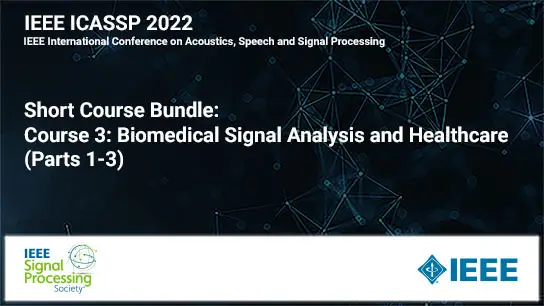Going from Lines to Triangles: A Formulation for Time-Frequency Moments of Time-Series With Application to Study fMRI
Ashkan Faghiri
-
Members: FreeSPS
IEEE Members: $11.00
Non-members: $15.00Length: 0:09:48
27 Jun 2022
Statistical moments provide us with quantitative measures of the data and estimating these moments in a time-resolved fashion is challenging but important, especially for analyzing human brain data. In this work, we present our attempt at providing a general pipeline for finding different moments (of different orders), which is also resolved in both time and frequency. We showcase the application of our method by analyzing a resting-state functional magnetic resonance imaging dataset. Here we find that individuals with first-episode psychosis (FEP) stay significantly more (compared to controls) in a state which has a very strong pair-wise (two-way) connectivity between salience and default mode networks. That same state also shows strong tri-wise (three-way) connectivity with other networks than the default mode, which points to the fact that different interaction orders have different and complementary information. Our proposed approach can extract meaningful and structured information by calculating (typically ignored) different order moments that are resolved in both time and frequency of the moment space as opposed to sample space.


